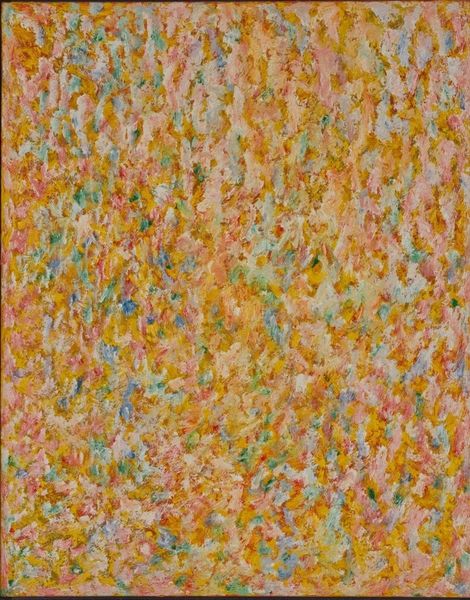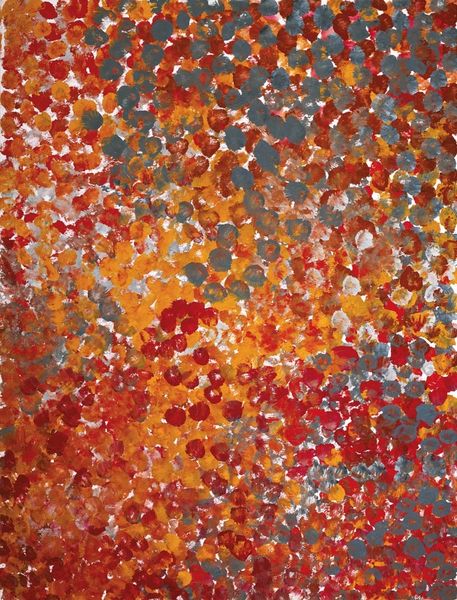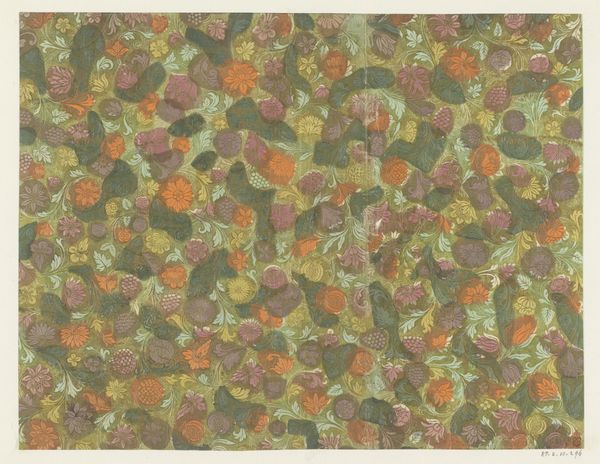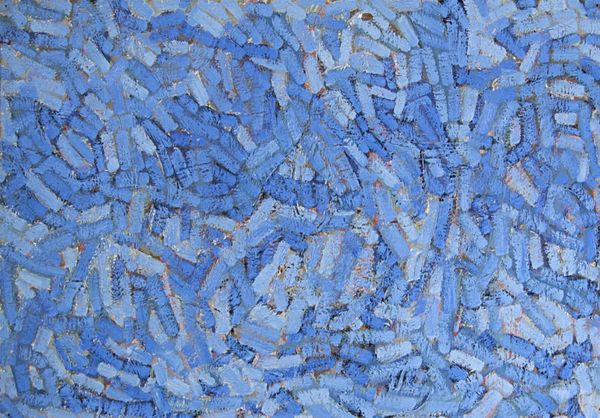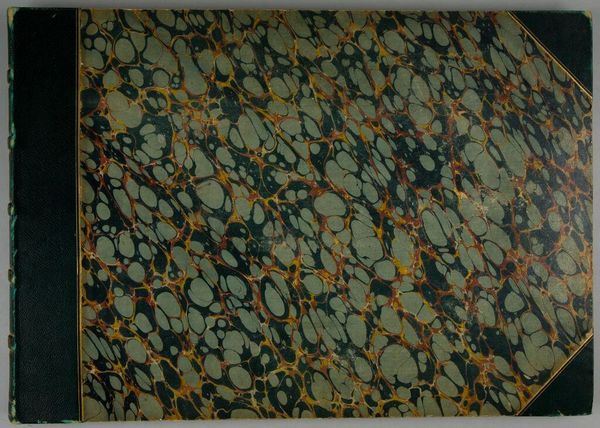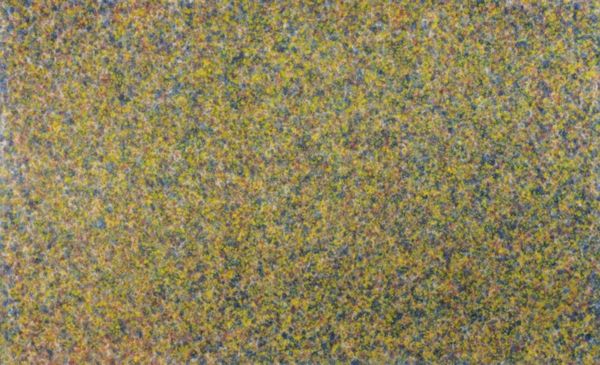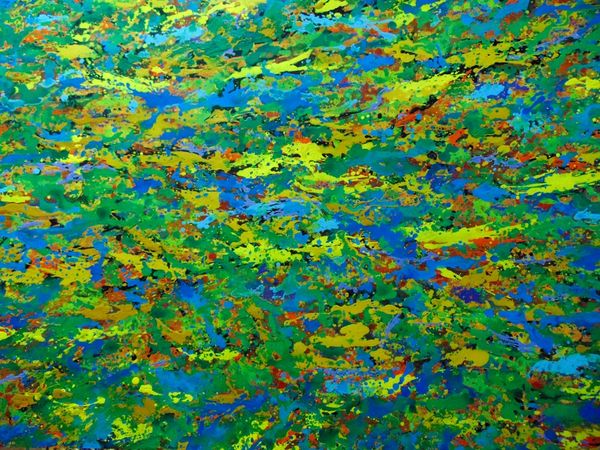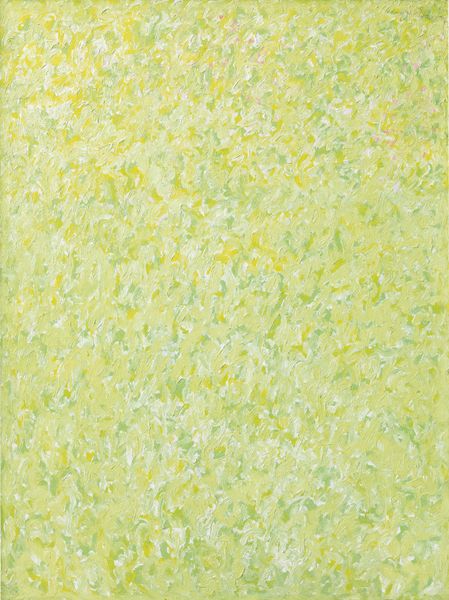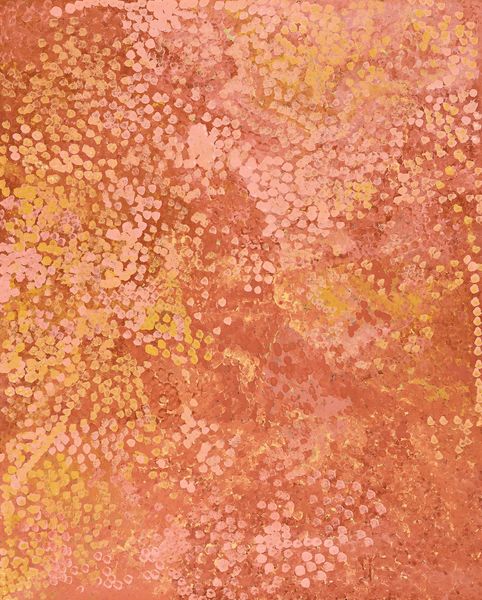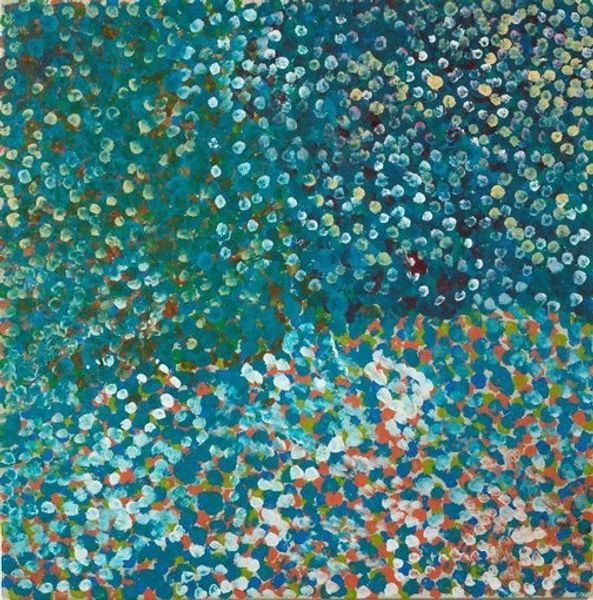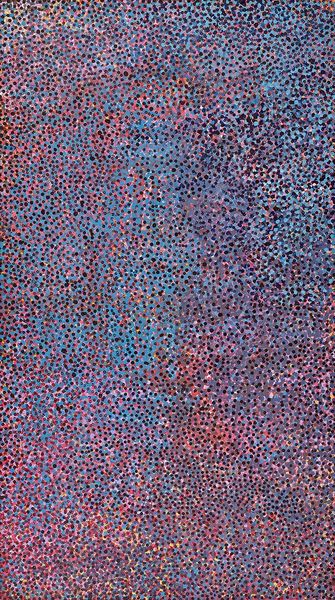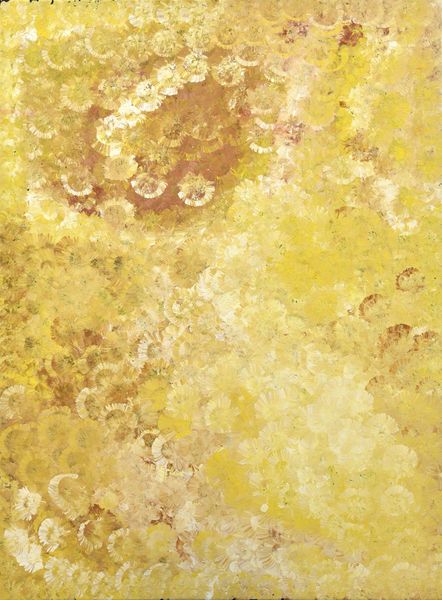
painting, acrylic-paint
#
abstract expressionism
#
organic
#
painting
#
landscape
#
acrylic-paint
#
organic pattern
#
abstraction
#
abstract art
Copyright: Emily Kame Kngwarreye,Fair Use
Curator: Today, we’re looking at an acrylic painting titled *Desert After Wintertime* by Emily Kame Kngwarreye. Editor: My initial impression is one of subdued vitality. It evokes the feeling of a landscape subtly reawakening, a delicate shift after a period of dormancy. There's a sense of burgeoning life just beneath the surface. Curator: Indeed. Kngwarreye's style, particularly evident here, demonstrates a unique exploration of the abstract, almost pointillist effect of dots within landscape painting. Let’s think about composition and color. We have soft greens and yellows punctuated by these earth-toned oranges that create a texture that speaks to a field, perhaps after the first rains. Editor: Absolutely, and when situating her work within the narrative of Indigenous Australian art, one cannot ignore its profound connection to the land and to Country. There is a beautiful story here of resurgence. The painting acts as an act of resilience by documenting seasonal transformations. What kind of commentary can we add that doesn't perpetuate common tropes? Curator: If we delve further into the formal elements, we could observe how the rhythmic application of paint across the canvas challenges our conventional ideas about pictorial space. This work embodies the principles of abstract expressionism where the materiality of paint, through the dot and dappling marks, allows for an image without firm gestural applications or grandstanding effects. Editor: But isn't that the tension – or dialogue between art and life that is especially heightened here. Kngwarreye’s individual visual vocabulary doesn’t operate in a vacuum but builds upon ancestral knowledge in relationship with place and ecological patterns of that landscape. This kind of work also reshapes our perspectives, right? Curator: It’s true, the piece allows us to see an intricate abstractness—that reality isn't just about representation, it's about embodied experience. Editor: Yes, and one rooted to this place as a gesture that goes far beyond its aesthetic experience. Curator: I am glad you brought the dimension into the mix. It makes me see the visual strategies in relation to the context. Editor: Absolutely. So what do we make of that connection, Curator? What feelings linger?
Comments
No comments
Be the first to comment and join the conversation on the ultimate creative platform.
